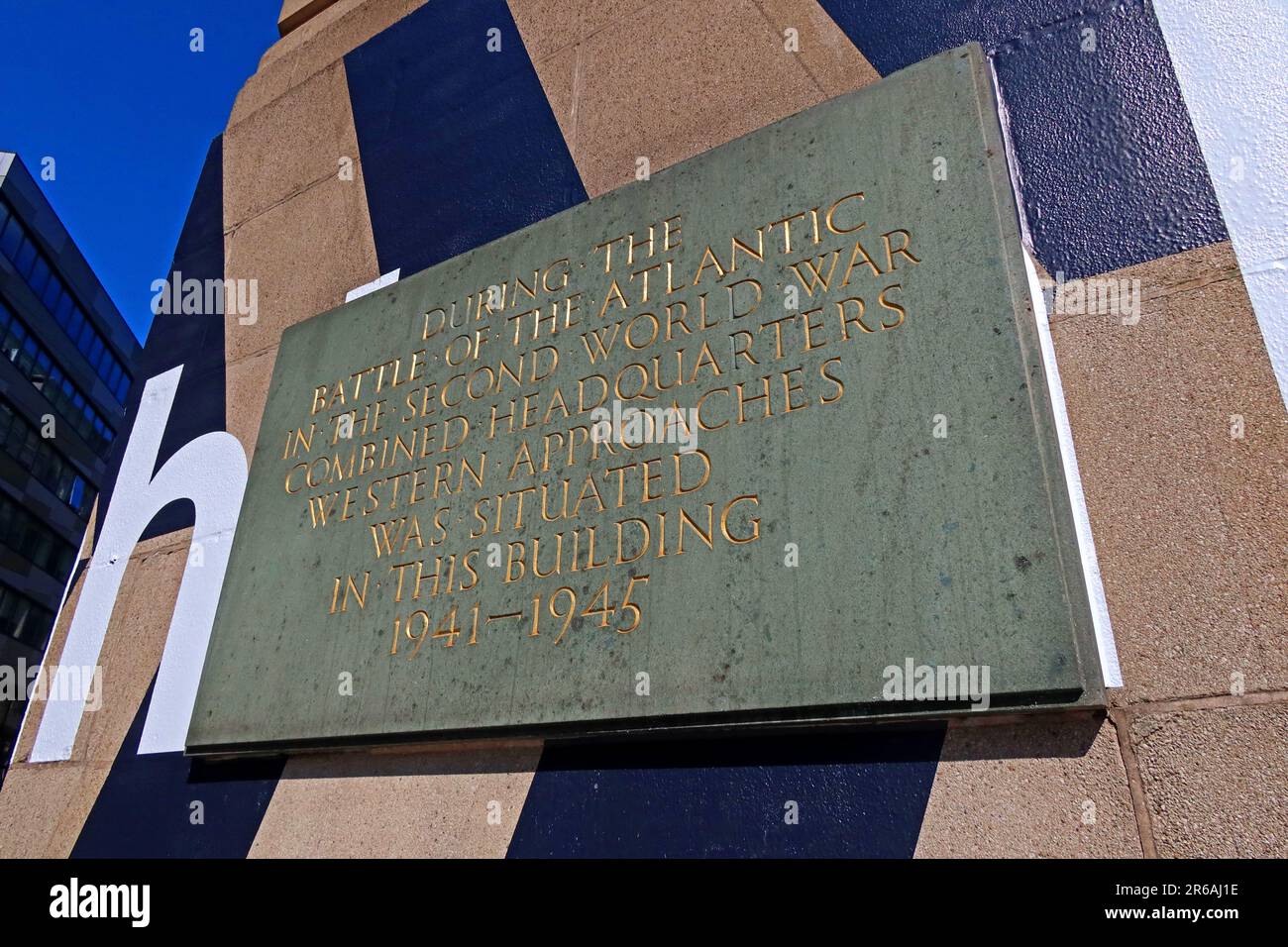Western Approaches plaque at Exchange Flags, 1-3 Rumford St, Liverpool , Merseyside, England, UK, L2 8SZ

Image details
Contributor:
Tony Smith / Alamy Stock PhotoImage ID:
2R6AJ1EFile size:
57.1 MB (3.1 MB Compressed download)Releases:
Model - no | Property - noDo I need a release?Dimensions:
5472 x 3648 px | 46.3 x 30.9 cm | 18.2 x 12.2 inches | 300dpiDate taken:
27 May 2023Location:
1-3 Rumford St, Liverpool , Merseyside, England, UK, L2 8SZMore information:
Commander-in-Chief, Western Approaches was the commander of a major operational command of the Royal Navy during World War II. The admiral commanding, and his forces, sometimes informally known as 'Western Approaches Command, ' were responsible for the safety of British shipping in the Western Approaches. History Admiral Martin Dunbar-Nasmith, who had been Commander-in-Chief, Plymouth, also took over responsibility for the Western Approaches from the start of World War II. After the fall of France in June 1940, the main North Atlantic convoy routes were diverted around the north of Ireland through the north-western approaches. By late 1940, the location of the Combined Operations headquarters at Plymouth was increasingly awkward and the decision was taken to move the Combined Operations headquarters to Liverpool. On 7 February 1941, the headquarters was established at Derby House, Liverpool, with a secondary control bunker built in Magee College, Derry. Derby House was designated HMS Eaglet; shore establishments were often given ship ("stone frigate") names to meet the requirement that their Navy personnel be borne upon the books of a specific ship. The headquarters of No. 15 Group RAF (part of Coastal Command) moved to Liverpool at the same time. On 17 February 1941 Admiral Sir Percy Noble was appointed as the new Commander-in-Chief, Western Approaches Command. The Western Approaches Tactical Unit (WATU) was formed in January 1942 to develop and disseminate new tactics to counter German submarine attacks on trans-Atlantic shipping convoys. WATU took up residency on the top floor of Derby House. Over the next two years, Admiral Noble built up the bases for the North Atlantic escort groups at Greenock on the Clyde, Derry and Liverpool and set up the training facilities that were the foundations for eventual victory in the Battle of the Atlantic. On 19 November 1942, Admiral Max Horton replaced Admiral Noble; Horton then was Commander-in-Chief